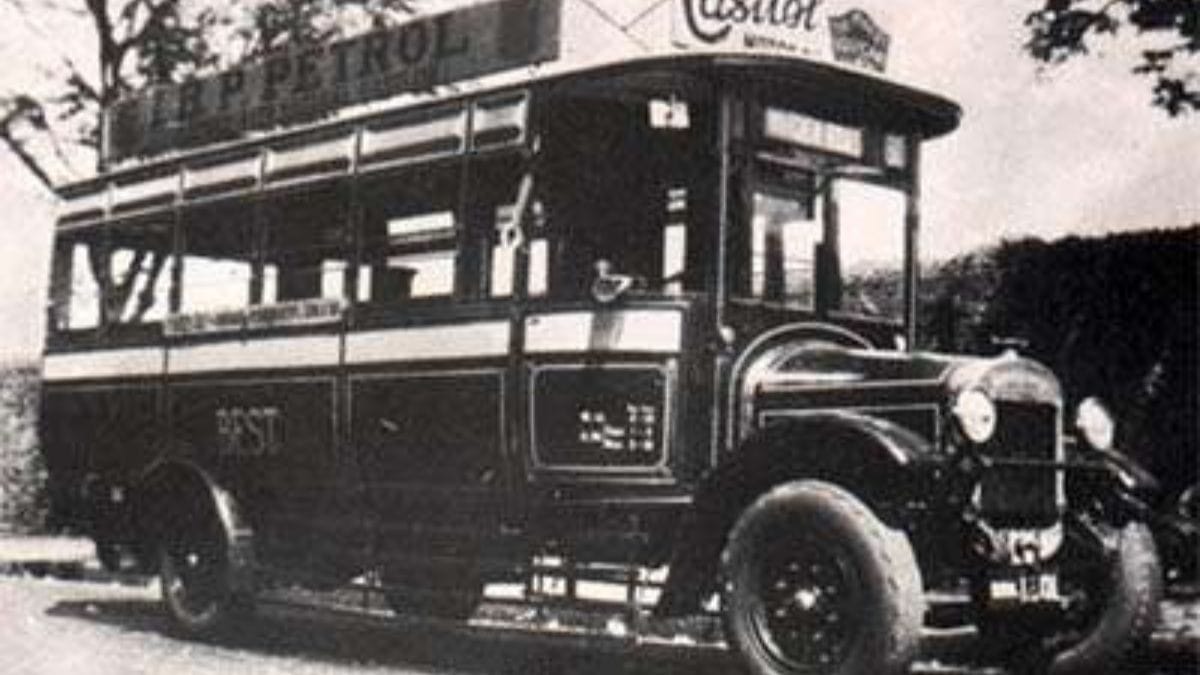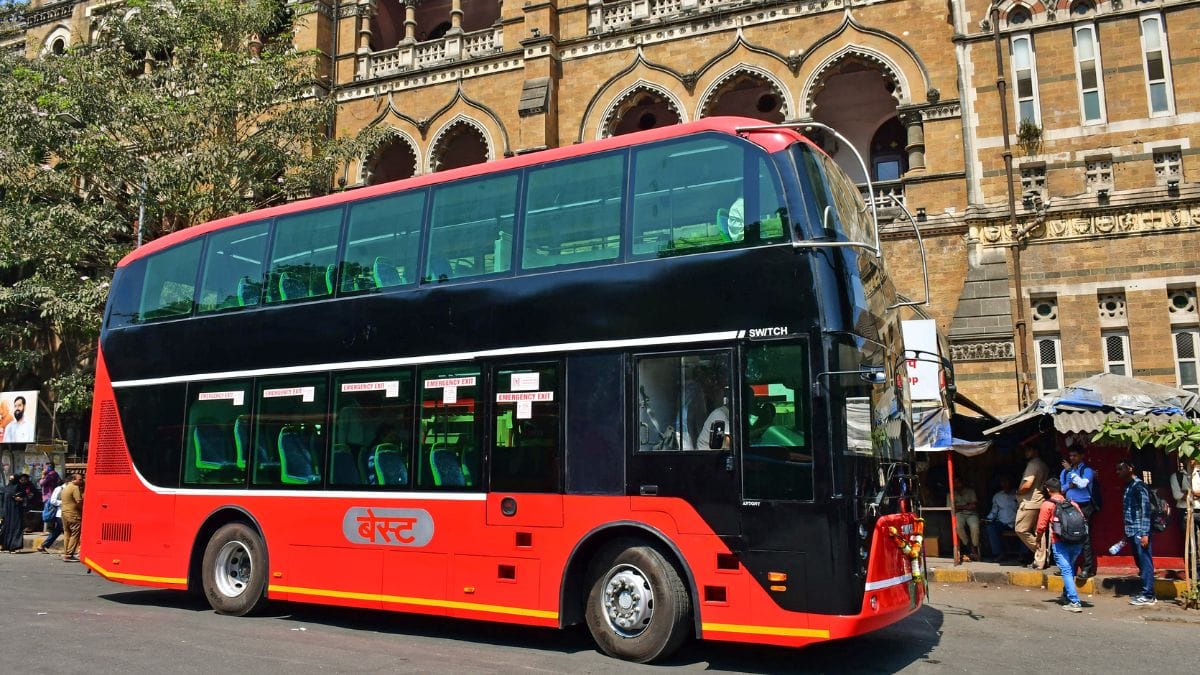Mumbai: Mumbai’s iconic red buses, especially the beloved double-deckers, have long been a defining feature of the city. However, they now face a host of challenges, from operational hurdles and financial losses to accidents and a shrinking fleet.
The latest problem is a leadership vacuum. Brihanmumbai Electric Supply & Transport (BEST) undertaking, responsible for Mumbai’s public bus transport system, has been without a permanent head for over a month, which officials say is hindering operations at the already-stressed organisation which ferries 32 lakh passengers a day,
The previous general manager, IAS officer Anil Diggikar, was transferred after a series of fatal accidents, including an incident on 9 December last year in Kurla in which a BEST bus mowed down nine people.
Another IAS officer, Harshdeep Kamble, was given the post instead but he didn’t assume charge and was eventually given another assignment.
The state government has, for now, given additional charge of the body to Ashwini Joshi, additional municipal commissioner at the Brihanmumbai Municipal Corporation (BMC), as an interim head.
BEST officials find this problematic as they say they have to take files to the BMC headquarters, where the additional municipal commissioner sits for approval.
Speaking to ThePrint, former BEST chairman Sunil Shinde emphasised the importance of the general manager position.
“The general manager is a very important position. It is a big organisation, including a supply and transport division. There are many important policy matters that BEST handles. It oversees supply, is involved in decision-making like budgeting, ensuring material stock, etc, and for all this a GM is required,” said Shinde.
“Though someone has been given powers, those powers are limited. The person won’t be able to make bold decisions and will be constrained.”
Without a dedicated general manager, the organisation’s functioning and decision-making have been affected.
“Although we haven’t had a problem in getting any decision approved yet, not having anybody in the office does hamper our work. We have to make an appointment and go,” said a senior BEST official.
The official added that meetings often involve unnecessary back-and-forth due to the need for data retrieval from different locations. “It is a bit inconvenient,” said the official.
A series of accidents involving BEST buses, a shrinking fleet, issues with the wet-lease system, reduced bus frequency, and longer wait times have only added to the woes of the already suffering body.
“BEST is cash-strapped. Besides, the wet-lease system, instead of solving our problems, has added to our misery. Since the employees under a wet lease are contractual, the loyalty towards the organisation is not there,” said the BEST official.
ThePrint reached Dr Ashwini Joshi via calls and email and Harshdeep Kamble via calls. This report will be updated if and when a response is received.
Also read: Where Sachin was once ball boy, Pataudi last took guard—Mumbai’s Wankhede stadium hits 50
A headless organisation
After the Mumbai suburban rail network, BEST is the city’s second choice for public transport.
At one time, its double-deckers were particularly popular. The first BEST double-decker bus rumbled into Mumbai (then Bombay) in 1937, more than a decade after the city got its first single-decker in 1926.

However, the organisation has seen four general managers come and go in just the past 4 years.
IAS Surendrakumar Bagde served as general manager between 2017-2021. He completed his tenure and was put on central deputation.
His successor, Lokesh Chandra, took charge in 2021 and held the position for two years before swapping places with Vijay Singhal in June 2023.
Chandra went on to become chairman and managing director of state-run MAHADISCOM while Singhal, who was the head of MAHADISCOM, came to BEST.
But within a few months in March 2024, again there was an IAS reshuffle in the state and Singhal was transferred to take charge of City And Industrial Development Corporation Of Maharashtra Ltd (CIDCO) while Anil Diggikar was appointed the general manager of BEST.
But Diggikar’s term did not last a whole year.
He was removed from his post after a series of accidents. The latest and one of the worst was the 9 December Kurla incident when a BEST bus rammed into at least 40 vehicles, killing nine people and injuring 42. The bus was an electric bus on a wet-lease model.
After that, a pedestrian who was hit by a motorbike fell on the road and was killed by a BEST bus.
Then in the same week, another bike rider was hit by a bus and lost his life.
“BEST has been going through a slew of problems in the past few years. During my tenure and even before me, we tried to work around it. However, since it is a public undertaking, it cannot really be a profit-making entity and we cannot increase the fare price. So, it was quite challenging to turn it around,” said a former BEST general manager who did not wish to be named.
“There are lots of financial constraints where there is no source of income. But one still has to keep trying. I don’t know why nobody would want to take charge of it now.”
Ravi Raja, a BJP member who was on the BEST committee for 23 years, told ThePrint that with such losses, nobody wants to take over the burden of BEST.
“You have to have a full-time GM. It is an uphill task that one cannot do from the BMC office,” he said.
In the red
BEST has been bleeding financially for many years. Since 2015, the BMC has been providing budgetary support, but BEST officials say it isn’t enough.
In 2024-25, the BMC allocated Rs 928 crore for the undertaking, up from Rs 800 crore in 2023-24. In 2022-23, the funding stood at Rs 1,382.28 crore. In the current financial year, BMC allocated Rs 1,000 crore for BEST.
Despite this, BEST is in the red, with losses in 2024-25 going up to nearly Rs 9,000 crore.
With it also facing operational challenges, IAS officers see it as a “punishment posting”, said Raja.
“Since 2014-15, BEST has been declining. The losses were mounting because of financial constraints as it is not profit-making. And this is not good. So, because of BEST’s position, nobody wants to work here and bail it out,” he added.
But Shinde asks why IAS officers should only concentrate on profit-making departments.
“Will no IAS officer take the responsibility of a loss-making entity? Who else will?” said Shinde.
‘Wet-lease started the downfall of BEST’
During Municipal Commissioner Ajoy Mehta’s tenure, the wet-lease model was introduced in 2019, shifting bus operations to private contractors.
The system—under which private firms supply buses and drivers and handle maintenance—has been blamed for the rise in recent bus accidents.
Under the wet-lease model, BEST doesn’t own the buses. Instead, private operators provide buses along with drivers and conductors.
These contractors are responsible for the maintenance of the buses as well as managing employee payroll. BEST only fixes fares and provides the routes for these drivers.
According to BEST, 5,242 drivers and 2,156 conductors currently work under the wet-lease model while the organisation employs 6,337 drivers and 7,724 conductors.
“Wet-lease started the downfall of BEST,” said Raja.
The wet-lease model was introduced to arrest BEST’S financial losses. According to Shinde, the model was approved because an expert panel then believed that permanent recruitment and buying new buses was not feasible for a loss-making entity like BEST.
Instead, it believed outsourcing the maintenance and ownership of its buses and employees would help it save money.
“To an extent, it worked. However, it damaged BEST’s service. The wet-lease operators did not inculcate BEST discipline. They did not train them properly. They were not mentally fit. This increased the accident rate,” said Shinde.
“So even if it increases the budget, BEST should have its own staff because private contractors are not able to match up to BEST standards. The image is now going down.”
BEST officials say the model needs to be scrapped and ownership of the buses needs to be transferred to the organisation.
BEST public relations officer Sudas Sawant told ThePrint that the blame for the Kurla accident, which was attributed to the driver’s lack of training, lies primarily with the operator responsible for the driver.
At BEST, drivers are trained for four weeks while conductors receive two weeks of training, he said. In contrast, wet-lease operators only train their drivers for three to four days, he added.
“At the BEST facility, apart from the operational training, at depots, we continuously monitor our staff. We have big LED screens which educate the driver on how to behave with customers and how to be mentally fit. We have on-site therapists and doctors to take care of drivers and conductors,” Sawant said. “But this doesn’t happen in the case of wet-lease employees.”
Another major issue BEST faces is its depleting fleet. About two years ago, it had a fleet of 3,400 buses. By the end of 2023, an additional 3,000 electric buses were planned. The organisation had planned to convert all its fleet to electric by 2027 and take the number to 10,000.

However, the current situation is dismal.
According to BEST, the total fleet stands at 2,855 with 920 buses owned by BEST and 1,935 buses on wet-lease. This number is expected to go down by another 110 as old buses are getting scrapped.
For double-decker buses, BEST placed an order for 200 buses in 2022 but has received only 50 buses so far. It ordered 2,100 AC single-decker buses in May 2022 but has received only 301 so far.
In April 2024, it placed an order for 2,400 single-decker EV buses, but none have been received so far. In May 2024, another order for 250 single-decker buses was placed. Nothing has been delivered so far.
“There is no particular reason for the delay. We have served notices to the manufacturers. But apart from the promise of delivery, we don’t get anything else,” said Sawant.
The average cost for procuring these buses is Rs 2 crore. Officials say a lack of funds could be the reason for the delay in procuring these buses,
As a result, the wait time has increased to 45 minutes on average, “which is absolutely not acceptable”, said Raja.
Although BEST employees receive salaries on time, wet-lease employees face delays in payments from their operators.
Last week, the contractual employees of a private operator went on a flash strike at one of the depots in Mumbai, affecting the services of BEST buses partially.
“Such occurrences have increased and though we then remove our own drivers so that the functioning of our buses is not affected, it ends up tarnishing the overall image of the undertaking,” said the BEST official quoted above.
“One of the solutions to our problems is to do away with the wet-lease programme and the BEST should own its fleet and operations.”
Shinde and Raja agree. According to them, BEST should also be fully merged with the state government or BMC and the state body should oversee its functioning.
For this, the BMC act needs to be amended and only the state government can do that as BMC has no power to amend its own act, said Raja.
“Looks like the state and BMC don’t have any interest in the smooth functioning of the undertaking,” said Raja.
(Edited by Sugita Katyal)






